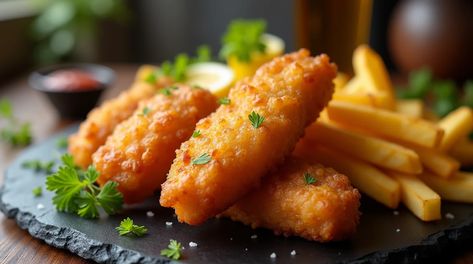Preparing the Chips
Ah, the chips—the unsung heroes of this dish. To achieve that irresistible crunch, follow these steps:
- Select Starchy Potatoes: Varieties like Russet or Maris Piper work best because they absorb less oil and develop a fluffy interior.
- Cut Uniformly: Aim for thick-cut fries (about ½ inch wide) to mimic the classic chip shape.
- Soak and Dry: After cutting, soak the potatoes in cold water for at least 30 minutes to remove excess starch. Then pat them completely dry before frying.
- Double Fry: First, fry the chips at a lower temperature (around 300°F/150°C) until soft. Let them cool, then fry again at a higher heat (375°F/190°C) until golden brown.
These techniques guarantee chips that are crispy on the outside and pillowy on the inside—a winning combination every time.
Crafting the Perfect Batter
The secret to exceptional fish and chips lies in the batter. It needs to be light, airy, and capable of forming a protective layer around the fish. Follow these tips to nail it:
- Use Beer or Sparkling Water: Adding carbonation creates bubbles in the batter, resulting in a lighter texture.
- Keep It Cold: Chill your batter in the fridge until you’re ready to use it. This helps prevent the fish from absorbing too much oil.
- Season Generously: Enhance the flavor with spices like paprika, garlic powder, or cayenne pepper.
For a foolproof batter recipe, refer to the table below:
Basic Batter Recipe Table
Simply whisk the dry ingredients together, then gradually add the liquid until smooth. Voilà—you’ve got a batter ready to transform plain fish into crispy perfection.

Frying Techniques for Success
Deep frying may seem intimidating, but with a few precautions, you’ll breeze through it like a pro. Start by heating your oil to the correct temperature—around 350°F/175°C for fish and 375°F/190°C for chips. Use a deep-fry thermometer to monitor it closely.
A couple of key tips:
- Avoid overcrowding the pan, as this lowers the oil temperature and leads to soggy food.

